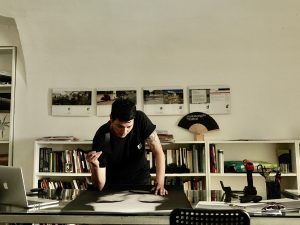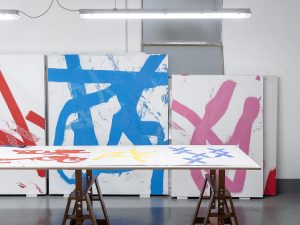Magazines are doubtless born of a critical impulse. But we need to understand what is meant by criticism.
First of all, it is important to say that in order to write about something, one has to know it thoroughly. So, the first thing that needs doing is to study the object of inquiry: see the exhibition, talk to the artist, talk to the curator, read all the documentation relating to the works. It is even better if you have a good familiarity with the artist and her career.
I am interested in reading what is written by people who have real insight into the given subject.
Another question: criticism, from the Greek verb krino meaning to separate, to discern, indicates judgement. Judgement is not necessarily negative.
It is true that the critical debate is ever-less present in the pages of magazines, but authoritativeness does not depend on age or the payment received. In my view, the critic’s authoritativeness depends on their intellectual hinterland and, above all, on the knowledge that they have of the artist: I can write authoritatively about Carla Accardi, Gino De Dominicis and Paola Pivi, but rather less so abour Achille Perilli, Emilio Prini and Piero Golia. Some people think that certain onlinemagazines have turned into news sites, and it is true that many of them have increased this aspect, also for economic reasons. However, a more critical attitude seems to survive especially in the smaller outlets. In any case, magazines have been a training ground for several generations of critics. Certainly, they used to be dedicated to a broader debate. I remember, for example, many artists’ engagement in the pages of Flash Art, from Jannis Kounellis to Enzo Cucchi… I remember Giancarlo Politi heading to the studios together with Helena Kontova and sometimes also with Giacinto Di Pietrantonio. This, indeed, encouraged discussion. Gea Politi writes that: ‘Flash Art was founded in 1967 in Rome, when talking about contemporary art was almost the affair of a secret society. The first issue was printed in the priests’ printshop in Macerata, with the typefaces of parish bulletins, and immediately became the symbol of research and contemporaneity. In issue 5, a young Giancarlo Politi hosted an equally young Germano Celant with a piece entitled “Appunti per una guerriglia”,which later became the manifesto of Arte Povera… In 2015, I introduced my editorship with a new editorial team specialising in the most pressing and current issues. We have been working on the Italian art system and panorama for almost ten years, and now Cristiano Seganfreddo is taking over the direction of Flash Art Italia with a new purpose and intent, which will be shared with us in the coming months. In 2024, the Italian edition will be revised to become a yearbook’. Gea and Cristiano are young, lively and intelligent and will surely do an interesting job. We will see if this format is able to write a new page in the history of magazines.
Seeking new paths is certainly right and understandable. On the other hand, it is not only the publishing industry that has changed: the entire art system has changed, too. Fairs and auctions have taken the place of the gallery system. The gallery owners, who were authorities for me, such as Plinio De Martiis, Luciano Pistoi, Leo Castelli and Ileana Sonnabend, are no longer around. Collectors such as Consolandi and Tettamanti, our fellow travellers, are no more. The same goes for the forerunning curators, great intellectuals like Harald Szeemann, Jean-Christophe Ammann, and Jan Hoet. Who knows what Kounellis would think — he who said: ‘I had to take a suitcase and lost the sweetness, of the new globalised artists from the remotest parts of the world’. The art market has been completely transformed. Of course, metamorphoses must always be accepted. Will the magazine system withstand this tsunami? One thing is certain: discussion has always done us good, and always will do.





